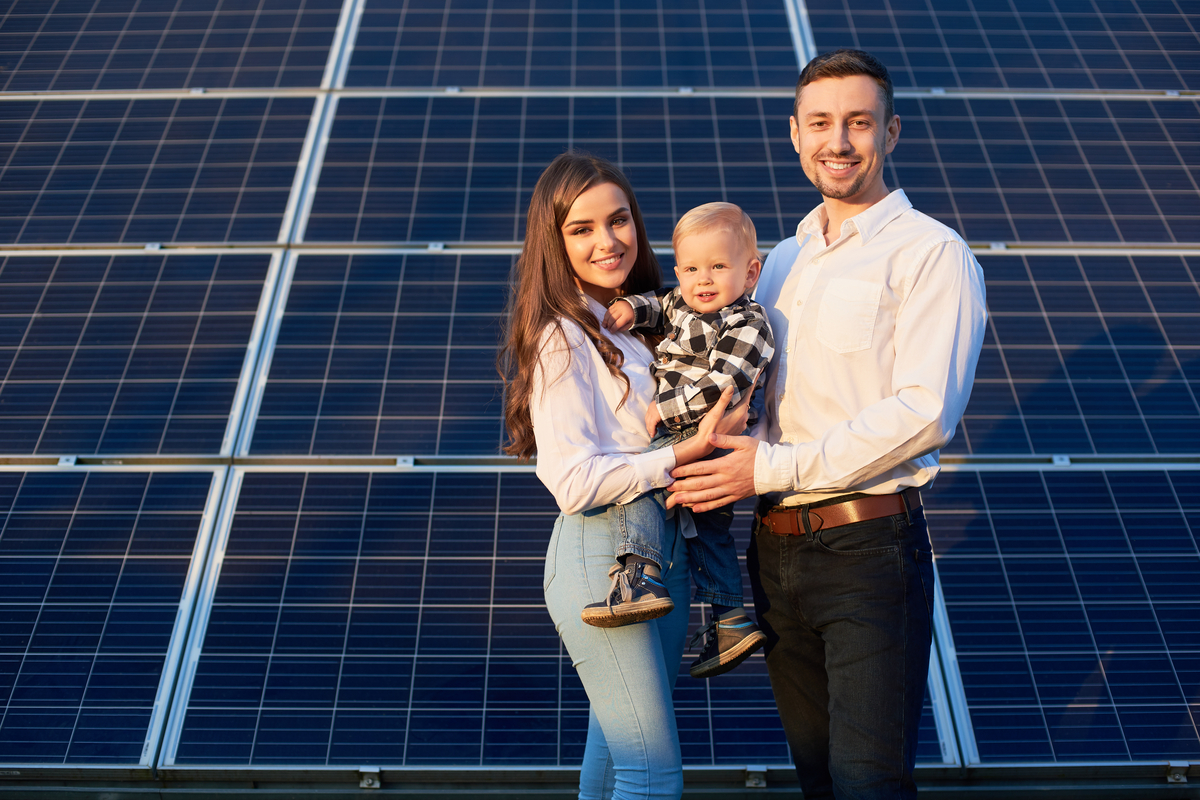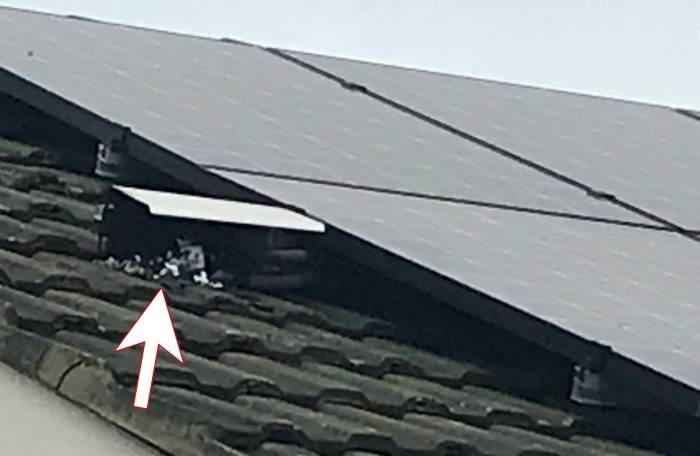
Most solar panel systems are perfectly safe and cause no harm to property or people. However, poorly installed solar systems using low quality products can be risky.
The risk can arise with solar panel systems that use a string inverter. With string inverter systems, high direct current (DC) voltage from the panels runs across the roof to the inverter where it is converted to safer alternating current (AC) power.
In fact, the maximum DC voltage for Australian residential solar panel systems has recently been increased from 600V to 1,000V making the issue of solar system safety even more critical. This compares with 240V AC power that’s used in the home.
Unless all components of the string inverter solar system have been installed to the highest safety standards using high quality panels and cabling, there is a (slight) risk of solar fire. Clearly this is the last thing anyone wants.
On this blog:
The main cause of solar fires are faulty DC isolators according to Fire and Rescue NSW. A DC isolator is a switch installed next to a solar panel array which can be manually turned off to shut down the DC power between the solar panels and solar inverter.

Poor quality DC isolators increase the risk of solar fire
Due to hundreds of emergencies caused by poor quality DC isolators, Australian Standards for solar systems have changed. As from December 2021, new solar panel systems no longer require DC isolators; they are now optional.
Many of the problems with DC isolators come down to the poor quality of the DC isolator and the workmanship. That’s why choosing the right solar company that doesn’t cut corners is so important. It’s also why alarm bells should ring if you are quoted a super-cheap price for solar.
Other causes of solar fires include:
If any of these faults occurs, it can produce an electrical arc which can melt steel and glass and set most building materials on fire. It is therefore vital that there is a reliable safety mechanism built into your solar system to prevent an electrical arc occurring.

Mark sure a solar fire doesn’t happen to your home
Another lesser known risk with solar can occur if the mounting system is not strong enough to withstand high winds or if it doesn’t have sufficient corrosion protection. A cheap, low-grade mounting system may damage your roof and may not stay on in high winds.
As the mounting system is the base of your solar system, it must be fully weather resistant and provide adequate protection for the system’s cables.
If you live by the sea, the desert or anywhere that gets very windy, question your solar company closely about the quality and strength of the mounting system they are proposing for your solar installation.
With any solar system, it is highly recommended that you have it regularly maintained to ensure safety of the DC isolator, panels, inverter and mounting system.
Advanced solar monitoring can also provide early warning of any system malfunction caused by DC-related faults, hot spots and microcracks. This can be an excellent form of ‘solar insurance’ and can be retrofitted to most solar power systems, regardless of inverter brand.
Talk to SolarRun if you would like your solar system checked to ensure it meets safety standards or if you are interested in advanced solar monitoring.
SolarEdge uses Power Optimizer technology which overcomes the inherent safety issues with conventional string inverter systems. A power optimizer is a small device that is attached to the back of each solar panel
Power Optimizers use Module-Level Power Electronics (MLPEs) to individually control and condition the quality of DC power generated by the solar panels. This conditioned power is sent to a simplified string inverter which converts the conditioned DC power to AC power for use in the home or business.
With traditional inverters, even when the inverter is shutdown there is still high voltage in the wiring making it unsafe to touch. SolarEdge systems have a built-in SafeDC™ feature which ensures that the output voltage of each module is reduced to a touch-safe 1V whenever AC power is turned off.
This SafeDC™ feature replaces the requirement for a DC isolator or an alternative plug and socket arrangement.
In addition, the latest version of SolarEdge includes a sensor on each power optimizer – called SolarEdge Sense Connect* – which automatically monitors each panel and detects faulty wiring that could result in electrical arcs. If this happens, an automatic alert is sent to the installer (and the solar owner) pinpointing the panel(s) that are compromised. Where overheating occurs, the sensor immediately detects this and automatically shuts down the entire system.
Safety issues addressed by SolarEdge power optimizers
| Solar safety issues with conventional string inverter systems | SolarEdge power optimizer system |
| DC isolators | Not required (SolarEdge has a built-in SafeDC™ which reduces on-roof DC voltage to 1V) |
| High voltage DC power still running through wires even when the system is switched off | If the system is switched off, the voltage in the wires will not exceed 1V (touch-safe) |
| No proactive detection of electrical arcs | Potential faults that may cause an electrical arc are proactively detected and alerts sent to solar installer/solar owner. If the fault is serious, the system will automatically shutdown. |
SolarEdge vs. Enphase
Besides SolarEdge, the other main alternative to a string inverter system is the Enphase microinverter system.
Like SolarEdge power optimizers, Enphase microinverters are little black devices that sit on the back of each solar panel to individually optimise each panel. Both Enphase and SolarEdge enables panel-level optimization, they can overcome partial shading, provide panel-level monitoring, and cater to complex multi-directional roof layouts.
Where Enphase microinverters differ is that they convert the DC power from the panel to AC power at panel level. This means there is no high voltage DC power running across your roof which makes the Enphase system inherently safer than a conventional string inverter solar system.
Does this make Enphase safer than SolarEdge?
In our opinion, the answer is no. SolarEdge power optimizer systems are just as safe as Enphase microinverter systems thanks to the proactive panel-level fault detection and ability to reduce panel voltage to just 1V.
So, what are the advantages of SolarEdge over Enphase?
This table summarises the plus-points of a SolarEdge power optimizer system over Enphase.
| SolarEdge power optimizers | Enphase microinverters | |
| Warranty period | 25 years | 10 years |
| Heat tolerance | Up to 85⁰C | Up to 65⁰C (This can be a problem as the temperature on Aussie roofs in summer can reach up to 75⁰C.) |
| Efficiency | 99.5% | 96.5% |
| Price | Lower | Higher |
SolarEdge power optimizer systems lead the market for solar safety and value. With smart built-in safety features, SolarEdge systems are just as safe as Enphase microinverter systems but offer additional value with a longer warranty, greater heat tolerance, higher efficiency, and lower price.
SolarEdge systems can handle complex roof layouts and mismatched panels. So, if you install a SolarEdge system today you can add more solar panels down the track, even if the panel brand and wattage is different.
There are a host of other advantages that the SolarEdge system has over Enphase when it comes to solar battery storage, EV charging and future-proofing your home.
Get in touch if you would like to learn more or request a quote.
*Updated via firmware later in 2022
We are available! Have a question? Text us here.
 Text Us
Text Us
Thank you for presenting both sides of the argument in your post. It shows a fair and balanced approach. For additional information, click here.
Your blog post left me feeling inspired and motivated. The passion you expressed for the subject was contagious. I’m excited to explore more, so click here to continue the journey.